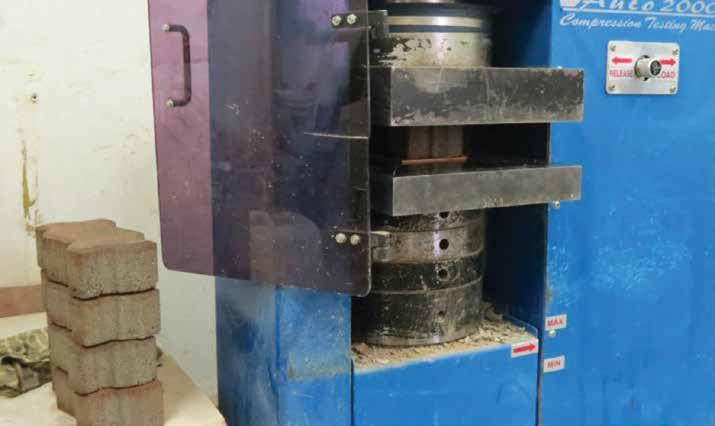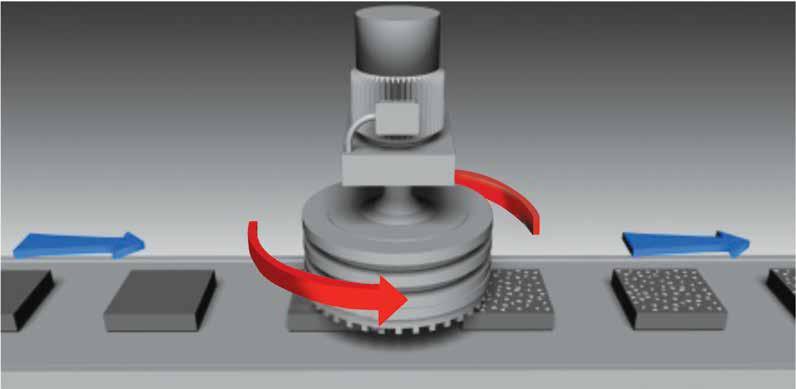6 minute read
Introduction
Next Article
South African National Standard for concrete paving bricks explained
The South African National standard for concrete paving blocks is SANS 1058: 2012. Bosun’s factories in Midrand, Brits and PE are amongst the first manufacturers of concrete paving blocks to be awarded the SANS 1058: 2012 mark. All our factories manufacture products according to the required specifications and product guarantees are based on them.
Bosun kerbs and retaining wall blocks also comply with the South African National Standard as tested by the CMACS and other independent accreditation bodies.
What does it mean if paving blocks comply with the National Standard?
• The manufacturer has an equipped laboratory and tests batches of manufactured blocks. • Blocks comply with strength specifications which are tested by means of tensile splitting. • Blocks comply with abrasive resistance specifications. TThis means that they are only permitted a specified amount of “damage” due to friction. • Blocks are permitted only minimal dimensional variances. • The visual quality of the blocks must be acceptable. A customer has recourse if necessary when it comes to the quality of paving blocks.

The fully equipped testing facility at Bosun Midrand. (All Bosun branches have fully equipped testing facilities.)
Bosun is a proud member of the Concrete Manufacturers Association, the American Interlocking Concrete Pavement Institute (ICPI) and the American National Concrete Masonry Association (NCMA).
The principles of the design and installation of segmented paving, kerbs and retaining walls are greatly standardised across the world and the American associations did a sterling job in creating technical specifications, design manuals and training courses based on these principles. Bosun is committed to sharing the knowledge gained from these associations with our local market. In fact, much of the technical material purchased by Bosun is available to our customers through our website, free of charge. (www.bosun.co.za) Good infrastructure is expensive but it lasts a lifetime, is reliable, and allows society to develop on the back of it.
State-of-the-art manufacturing equipment
Bosun pavers are manufactured exclusively on Hess Machines and SR Schindler machines are used for beneficiated finishes. These companies form part of the “Top Werk” group, one of the world’s leading manufacturers of precast concrete equipment.
The weak South African rand makes it more expensive to invest in this equipment, but we strongly believe that the accuracy of these machines, as well as their cutting-edge technology, result in products which are vastly superior to the average cheaper alternatives.


Transport
A specialised fleet of trucks are contracted to Bosun.
These vehicles are equipped with air suspension and aluminium decks to ensure a rigid, flat loading surface and the softest ride possible.
In addition, all trucks are equipped with state-of-the-art cranes in order to offload quickly and efficiently, again minimising the risk of damage to products.
Be aware that inferior delivery vehicles will cause damage to pavers in transit.
Expertise
Owning the best manufacturing equipment is well and good. However, real value can only be added by the expertise of the people operating that equipment.
Bosun has employed the expertise of Industry-leading European consultants and invested heavily in staff development and training both locally and with overseas partners.
This has resulted in a product offering consistent with leading European manufacturers.
Jochen Meyer, one of Bosun’s European associates and block making consultants.
Larger paver sizes
Standard Brick BOSUN Pavers
Many of our dry cast pavers are much larger than traditional South African paving bricks. Wet-cast concrete manufacturers have traditionally been known for the production of large “flagstones”, which are similar in size to Bosun’s large pavers.

However, dry-cast slabs offer the following advantages over traditional wet-cast flagstones: • They are guaranteed to be dimensionally more accurate than wet-cast flagstones. • They have non-tapered edges for more accurate installation and smaller jointing gaps. • They have nibs for accurate installation.
Manufacturing technology
Bosun manufactures a double-layer paver offering a “base” layer which reinforces structural integrity, while the “topping” layer provides a smooth, attractive finish which heightens abrasive resistance.

Guarantee
Bosun offers a five-year guarantee on its products. (See the detailed guarantee on page173.)
Beneficiated Concrete Finishes
Bosun offers concrete pavers with various beneficiated finishes or surface textures, which are new in South Africa and exclusive to Bosun. These finishes are achieved by means of technical processes with specialised machinery and equipment as shown below in these highly simplified graphic representations.
Ground pavers
The grinding of concrete involves cutting the surface or “face” of the concrete with a series of diamond tipped blades, creating a fairly smooth texture. The smoothness of the surface texture is dependent on the use and application of the amount of cutting blades being used. The desired outcome of this process is to expose stones with interesting natural colours on the surface of the pavers.
The difference between grinding, washed and shot-blast is that stones on the surface of ground pavers are perfectly flat and smooth whereas stones exposed by means of washing or shot-blasting will still have a naturally rounded shape. Grinding is an expensive process due to blade costs.

Shot-blast pavers
The shot-blasting process involves peppering pavers or kerbs with “shot” or small beads of steel which are fired at high velocity by means of compressed air. The shot actually dents the surface of the product bit by bit, thereby dislodging small particles of concrete which then fall away. This exposes small stones and other aggregates on the surface.
In a sense, the result is similar to that of washed pavers, as described opposite, but a shot-blast texture is slightly smoother, although more irregular than a washed texture.

Ground and shot-blast pavers
These pavers are ground and then lightly shot-blasted in order to provide a rougher surface texture.
Washed or exposed aggregate pavers
In the washing process fine cement particles are removed from the paver’s surface with a special water-spraying technique which exposes beautiful small stones in various colour schemes, creating interesting and hard-wearing surface textures.

Chamfered pavers
Chamfering is a process where an angled edge is cut on the paver. This could be done on any or all of the edges.

Calibrated pavers
Calibration is a process whereby the bottom of a paver is cut with a diamond-tipped blade in order to create a thickness which is dimensionally accurate and consistent.
It is almost impossible to manufacture large pavers and maintain accurate and consistent heights. The SANS height variance specification on large pavers is ±5mm. This could result in a 10mm variance between two adjacent pavers, though one which is still within the specified range.
All large paving stones should be calibrated prior to resale.


